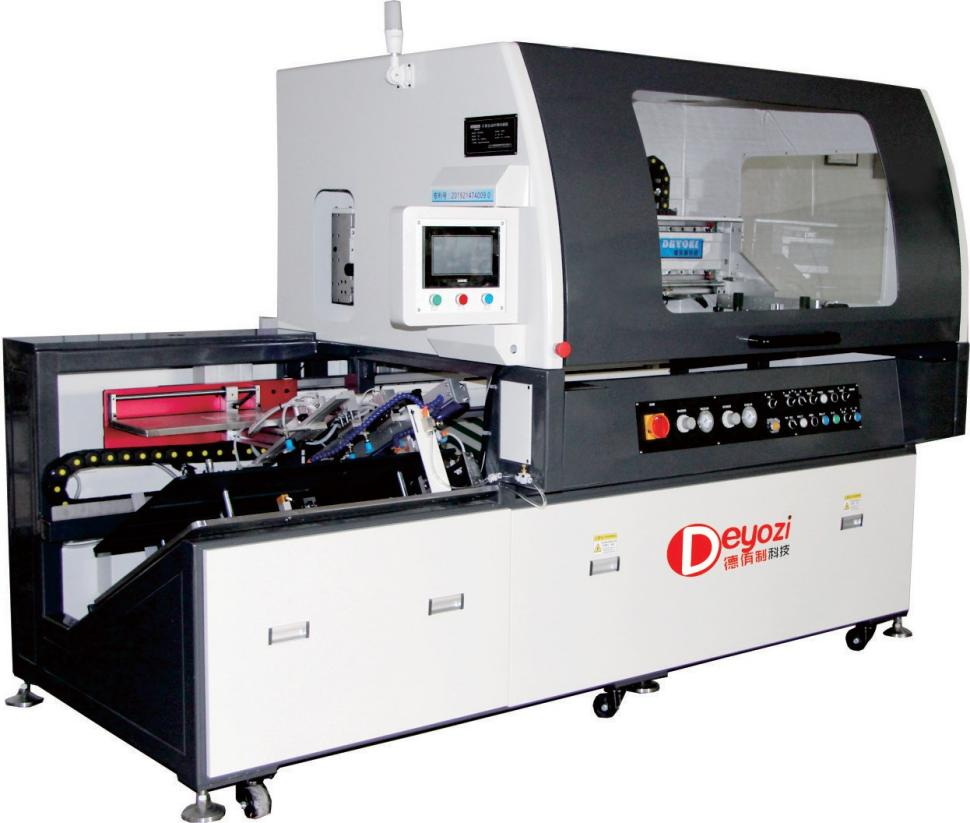First, clarify the following requirements:
Product Material: Is it plastic (PVC, ABS, PC, PMMA), metal, glass, ceramic, or composite material?
Product Shape & Size: Is it flat sheets, curved surfaces, or irregularly shaped parts? What are the maximum and minimum printing sizes?
Surface Characteristics: Flatness, smoothness, is it reflective? This affects the difficulty of CCD recognition.
Accuracy Requirements: What registration accuracy is needed? ±0.1mm, ±0.05mm, or higher? (This is key to determining the equipment grade).
Printing Type: Single-color printing? Multi-color precision registration? Are special processes required (e.g., UV raised printing, mirror ink)?
Automation Needs: Is a complete automated line needed for loading, printing, drying, and unloading?
Production Capacity Target: How many pieces need to be produced per hour or per day?

Secondly, based on your requirements, evaluate potential manufacturers using the following criteria:
1. Technical Capability & Core Components (Hard Power):
Alignment System: If high precision is needed, a CCD vision alignment system is essential. Inquire about the camera brand, light source type, and the intelligence of the software algorithm (e.g., ability to recognize low-contrast fiducial marks).
Transmission System: Are the core motion components (ball screws, linear guides, servo motors) from renowned brands (e.g., THK, Hiwin, Panasonic, Mitsubishi)? This directly determines the machine's repeatability and long-term stability.
Control System: What are the brands of the PLC (Programmable Logic Controller) and HMI (Human-Machine Interface touchscreen)? Established brands (e.g., Siemens, Mitsubishi) offer higher stability.
Machine Frame: Is it made of high-strength steel and has it undergone stress relief treatment? A robust frame is the foundation for resisting vibration and ensuring printing accuracy. If possible, test its sturdiness on-site by applying firm pressure.
Squeegee & Flood Bar: Is the pressure adjustment precise (preferably with digital display)? Is the angle adjustment convenient?
Vacuum Table: Is the suction force sufficient and uniform? Is the suction zone design reasonable?
2. Quality & Reliability (Ensuring Stability):
Sample Testing: It is crucial to bring your own physical samples (preferably from the production line, with natural tolerances) and screens to the manufacturer's site for a test run.
Repeatability Test: Continuously feed 20-30 pieces of material, letting the machine complete the "recognition-alignment" cycle. Use measuring instruments to check the deviation each time, ensuring it stays within the promised tolerance.
Limit Test: Intentionally place the material at a slight rotation or offset to test the CCD system's correction capability.
If conditions allow, visit their assembly workshop. Observe if the production process is standardized and if components are organized neatly. This reflects their management level and attitude towards quality.
3. Service & Support (Soft Power - Critical for Long-Term Operation):
Does the manufacturer have a professional team of engineers? Can they provide timely installation, debugging, and operator training?
Debugging CCD vision systems and precision equipment is relatively complex, making the manufacturer's technical support capability vital.
What is the promised response time for after-sales service? Do they offer remote technical support? Are common spare parts kept in stock?
Inquire about successful cases in your industry or with similar processes. Contact existing clients to learn about the real-world performance of the equipment.
Finally, make an informed choice based on your understanding and judgment of the manufacturer:
Consider Overall Value, Not Just the Lowest Price: The cheapest equipment often compromises on core components, materials, and after-sales service. Its Total Cost of Ownership (including repairs and downtime losses) will likely be higher.
Clarify Contract Terms: Ensure the contract details the equipment configuration, technical parameters, delivery date, payment terms, warranty period, after-sales service scope, and response times.
Focus on Training & Documentation: Confirm that the manufacturer provides complete operation and maintenance manuals, as well as systematic training.
Final Recommendation: Trust the results of your test run and your intuitive feelings from communicating with their technical team. An excellent screen printing machine manufacturer will care about your future production quality as much as you do and will be eager to prove themselves through their professional expertise and sincere attitude.
Contact: Bruce Lee
Phone: 13714371086
Email: hnlyxiaolong@163.com
Add: Room 203, 2nd Floor, Building 1, Yongshengfa Technology Park, No. 28 Daxing Road, Dalingshan Town, Dongguan City, Guangdong Province, China